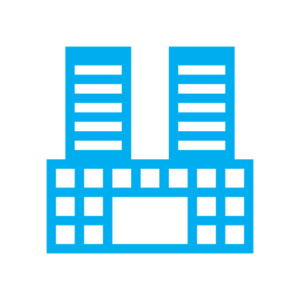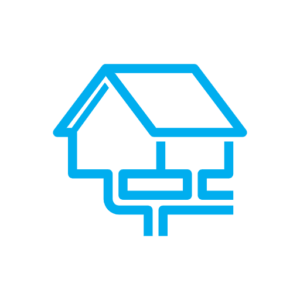Autodesk Course Schedule
Autodesk BIM 360
| Course Title | Duration |
|---|---|
| Document Management in BIM 360 (101) | 69 Minutes |
| BIM 360 Design Collaboration (101) | 80 Minutes |
| BIM 360 Account Administration (101) | 75 Minutes |
| BIM 360 Build – Project Management (101) | 90 Minutes |
| BIM 360 Case Study – Overcome Implementation and Workflow challenges | 90 Minutes |
| Module Overview in BIM 360 (101) | 44 Minutes |
| Design Fundamentals in BIM 360 (101) | 90 Minutes |
| BIM 360 Model Coordination (101) | 58 Minutes |
| Plan in BIM 360 (101) | 90 Minutes |
| BIM 360 Build – Field Management (101) | 90 Minutes |
| Field Classic in BIM 360 (101) | 90 Minutes |
| Cost in BIM 360 (101) | 90 Minutes |
| Plug-ins in BIM 360 (101) | 90 Minutes |
| BIM 360 for Owners (101) | 66 Minutes |
| BIM 360 and Insight (101) | 90 Minutes |
| Document Management in BIM 360 (101) | 60 Minutes |
| Glue (Classic) in BIM 360 (101) | 90 Minutes |
Autodesk AutoCAD
Autodesk Civil 3D
Autodesk Revit
Autodesk FormIt
| Course Title | Duration |
|---|---|
| User Interface, Sketch Tools, and Primitive Geometries in FormIt | 90 Minutes |
| Advanced Geometries, Advanced Tools, and Side Menus in FormIt | 76 Minutes |
| Analysis, Plug-Ins, Worksharing, and Dynamo in FormIt | 69 Minutes |
Course Grid

Enhanced Block Workflows in AutoCAD
In Enhanced Block Workflows in AutoCAD you will learn principles of using blocks within AutoCAD and AutoCAD-based products. Learn to build and create a block, insert blocks - updated with the newest AutoCAD features, using dynamic blocks. Additionally, Raymond will demonstrate how to edit blocks and how to remove unused blocks and elements from your drawing.

Introduction to Family Building in Revit (201)
Learning Objectives for Introduction to Family Building in Revit (Revit 201)
On completion of this course, users will be able to do the following:
- Start a new family utilizing the best Revit Family templates for their specific uses
- Create a parametric structure to allow for adjustments to be made in the project
- Customize the visualization of family elements within the project environment
- Loading System Family Types
- System Families and Settings Reference. Revit includes multiple system families as well as project and system settings

Autodesk Vehicle Tracking – Swept Path Analysis in Civil 3D (201)
On completion of this course, users will be able to do the following:
- Configure the settings for Vehicle Tracking Swept Path
- Review the Vehicle tracking library
- Use various drive options to check and edit vehicle movement through a design
- Check for ground conflicts along the path of the vehicle
- Graphically display vehicle outlines along a path and the profile of the vehicle
- Animate the vehicle's path and generate reports

Modeling Conduit in 3D in Revit Electrical
On completion of this course, users will be able to do the following:
- Model conduit effectively in 3D
- Conduit Offsets
- Conduit Turns
- Conduit Drops

Plan Production in Civil 3D (101)
On completion of this course, users will be able to do the following:
- Explain the steps used to create plan and profile sheets in Civil 3D
- Create View Frames to produce printable areas along an alignment
- Use view frame grips to adjust the display of each sheet
- Create plan and profile sheets based on the location of the View Frames
- Edit Sheet Set and Sheet properties to update title block information

Working with Piping Tools in Civil 3D (101)
On completion of this course, users will be able to do the following:
- Discuss the types of networks that can be created in Civil 3D
- Configure pipe and pressure pipe network settings
- Create and edit pipe networks from objects and layout tools
- Create and edit pressure pipe networks from objects and layout tools
- Adding labels to networks in plan and profile, create network tables and reports

Introduction to Grading Tools in Civil 3D (101)
On completion of this course, users will be able to do the following:
- Use feature lines and grading objects to create a proposed surface
- Edit feature lines and grading objects to modify the proposed surface
- Calculate the volume between the two surfaces

Surfaces in Civil 3D (101)
On completion of this course, users will be able to do the following:
- List the steps required to build a Civil 3D surface
- Adjust and edit a surface using its properties
- Add existing conditions data to a surface
- Use drawing objects to improve accuracy
- Add additional surface data and define the extents of a surface
- Analyze and visualize surface properties, such as elevation data
- Label elevations, slopes, spot elevations, and watersheds
- Calculate cut and fill volumes

Working with Parcels in Civil 3D (101)
On completion of this course, users will be able to do the following:
- Draw parcel layouts from a legal description
- Create parcels from objects in the drawing, an external reference, or by layout
- Change parcel properties, like style, color, or line type
- Work with parcel numbers, rename, and renumber parcels
- Add and edit parcel labels, tables, and parcel reports

Getting Started in Civil 3D (101)
On completion of this course, users will be able to do the following:
- Switch between Civil 3D, Map 3D, and AutoCAD tools.
- Locate the basic features and commands of the Civil 3D interface.
- Use Civil 3D Prospector to access tools and commands.
- Access and generate pre-defined reports regarding AEC data.
- Create and assign object and label styles to change Civil 3D object appearance.

Annotation, Tags, and Schedules in Revit Architecture (101)
On completion of this course, you will be able to do the following:
- Add dimensions and text to sheets
- Create detail lines and add view specific symbology
- Create and maintain legend views
- Create and add tags to 2D and 3D views
- Modify schedule content
- Add schedules to sheets
Template Creation in AutoCAD (101)
On completion of this course, users will be able to do the following:
- Create Text Styles
- Modify Existing Text Styles
- Create Dimension Styles
- Modify Existing Dimension Styles
- Create Leader Styles
- Modify Existing Leader Styles
- Set Drawing Units
- Create Layers
- Modify Layers
- Create a Page Set Up for a Layout Tab
- Create a Template

Working with Plumbing Systems in Revit MEP (101)
On completion of this course, users will be able to do the following:
- Load Families
- Insert Family Components
- Draw Pipes
- Modify Pipes
- Add and Modify Fittings and Accessories
- Create Slope Pipe
- Create a Fire Protection System
Working Efficiently and Accurately in AutoCAD (101)
On completion of this course, users will be able to do the following:
- Create a Custom Workspace
- Object Selection, Creation and Visibility
- Multiple Drawings
- Use Additional Layer Tools
- Absolute and Polar Coordinates
- Temporary Tracking Points
- Construction Lines
- Reference Points

Hatching and Dimensioning in AutoCAD (101)
On completion of this course, users will be able to do the following:
- Insert Hatches.
- Modify Hatches.
- Place Dimensions based on Geometry.
- Modify Dimensions.
- Edit Dimensions.
- Use Centerline and Centermarks.

Using Text, Leaders, and Tables in AutoCAD (101)
On completion of this course, users will be able to do the following:
- Single-Line Text
- Multiline Text
- Edit Multiline Text
- Format Multiline Text. Insert a Leader
- Modify a Leader
- Insert a Table
- Modify a Table
- Add Blocks, Fields and Formulas to a Table

Layout Setup and Printing in AutoCAD (101)
On completion of this course, users will be able to do the following:
- Working with Model Space and Paper Space
- Create Viewports
- Modifying Viewports
- Set the scale of the Viewports
- Create additional Layouts
- Print/Plot from Model Space
- Print/Plot from Paper Space
- Preview Drawing before Printing
- Create PDF, DWF or Printed Drawing
- Select Options for Printing

Using Blocks and Block Tools in AutoCAD (101)
On completion of this course, users will be able to do the following:
- Create a block
- Block insertion methods
- Modify Dynamic Blocks
- Use Related Block Palettes
- Create Blocks
- Edit Existing Blocks
- Create a Block Tool Palette

Working with Curtain Walls in Revit Architecture (101)
On completion of this course, users will be able to do the following:
- Understand the Curtain Wall Components
- Use preloaded Curtain Walls
- Add Curtain Grids
- Attach Mullions to Curtain Grids
- Work with Curtain Wall Panels to insert doors, wall types, and more
- Create a custom Curtain Wall System

System Projects for Revit MEP (101)
On completion of System Projects for Revit MEP (101), users will be able to do the following:
- Link in other Revit models
- Import CAD files
- Create MEP based Levels
- Monitor linked elements
- Run Coordination Reviews for any changes between current and linked projects
- Batch Copy MEP fixtures from other Revit Models
